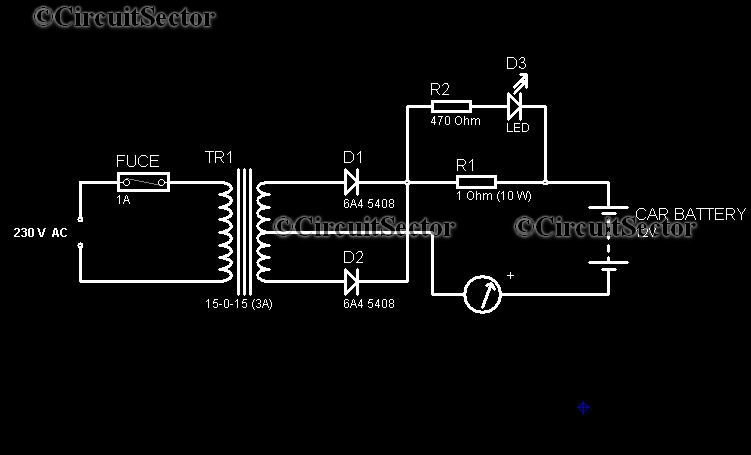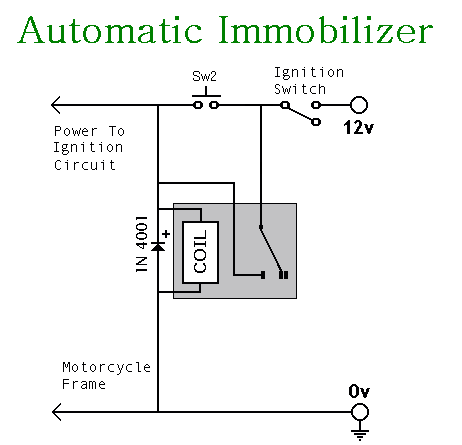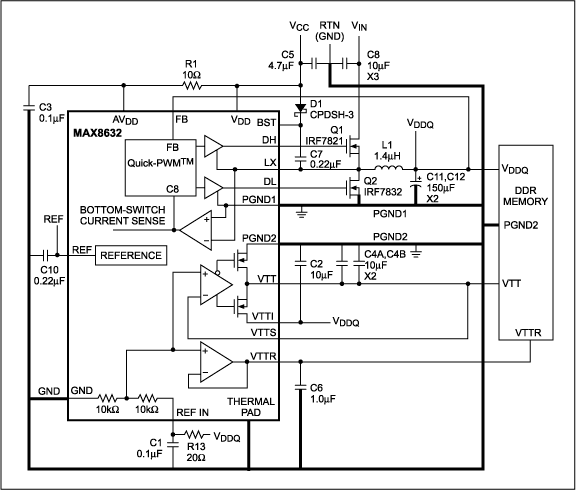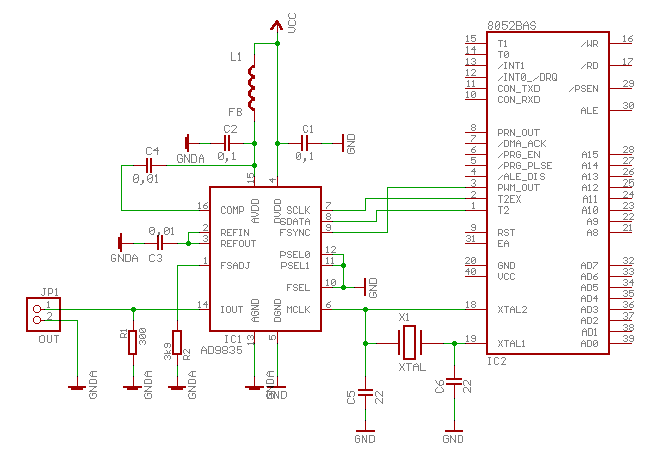
Basic UPS PCB
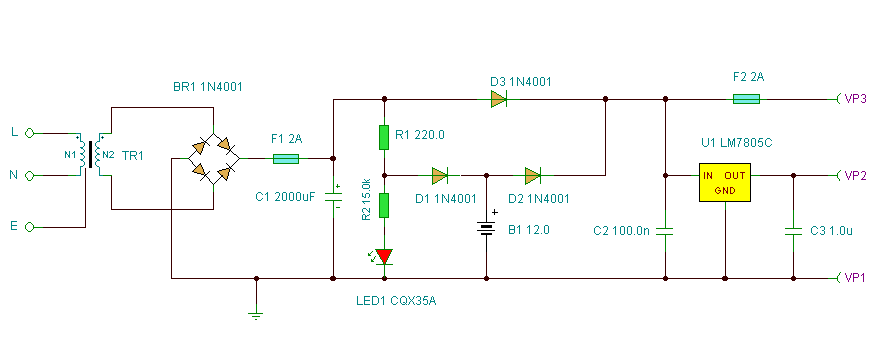
This circuit is a simplified version of a commercial uninterruptible power supply (UPS). It delivers a constant regulated 5 Volt output alongside an unregulated 12 Volt supply. In the event of a power failure, the battery seamlessly takes over, ensuring that there are no voltage spikes on the regulated output. The design can be modified to accommodate different regulated and unregulated voltage levels by utilizing various regulators and batteries. For instance, to achieve a 15 Volt regulated output, two 12 Volt batteries can be connected in series, along with a 7815 voltage regulator. The circuit offers substantial flexibility. Transformer TR1 is designed with a primary winding suited for the local electrical supply, which is 240 Volts in the UK. The secondary winding should be rated for at least 12 Volts at 2 Amps, but higher voltage ratings, such as 15 Volts, are also acceptable. Fuse FS1 is a slow-blow type that protects against short circuits on the output or a malfunctioning cell in the rechargeable battery. LED1 illuminates only when the mains electricity is present; in the event of a power failure, the LED turns off while the battery maintains the output voltage. The circuit diagram illustrates a functioning setup with mains power applied, where the nominal unregulated supply is accessible between terminals VP1 and VP3, and the 5 Volt regulated supply is available between VP1 and VP2. Resistor R1 and diode D1 form the charging path for battery B1. Diodes D1 and D3 ensure that LED1 does not light up during power failure conditions. A trickle charge design for the battery is implemented with diode D2, which is crucial for limiting the charging current; without D2, the battery would charge from the full supply voltage without current limitation, potentially leading to damage and overheating of certain rechargeable battery types. The circuit's ability to sustain the regulated output during a power outage is contingent on the load drawn from the UPS and the Ampere-hour capacity of the battery. For instance, using a 7 Ah 12 Volt battery with a load of 0.5 Amps from the 5 Volt regulator (with no load on the unregulated supply) would allow the regulated output to be maintained for approximately 14 hours. Batteries with higher Ampere-hour capacities would extend the standby duration, while lower capacity batteries would reduce it.
The circuit operates effectively by integrating several key components that work in harmony to provide a reliable power supply. The transformer TR1 steps down the 240 Volt AC mains voltage to a suitable level for the secondary circuit. The 5 Volt regulated output is achieved through a linear voltage regulator, while the unregulated 12 Volt output is derived directly from the transformer secondary. The inclusion of slow-blow fuse FS1 is critical for safeguarding the circuit against potential short circuits that could compromise the integrity of the power supply.
The LED indicator, which serves as a visual cue for power availability, is designed to be off during power outages, thus signaling the user that the battery is now supplying power. The charging circuitry, composed of resistor R1 and diode D1, is essential for maintaining the battery's charge without overloading it, ensuring longevity and reliability. The circuit's flexibility is further enhanced by the option to substitute different voltage regulators and battery configurations, allowing customization based on specific application requirements.
Overall, this UPS circuit exemplifies a robust solution for maintaining power supply continuity, making it suitable for various electronic applications where uninterrupted power is critical.This circuit is a simple form of the commercial UPS, the circuit provides a constant regulated 5 Volt output and an unregulated 12 Volt supply. In the event of electrical supply line failure the battery takes over, with no spikes on the regulated supply.
This circuit can be adapted for other regulated and unregulated voltages by using different re gulators and batteries. For a 15 Volt regulated supply use two 12 Volt batteries in series and a 7815 regulator. There is a lot of flexibility in this circuit. TR1 has a primary matched to the local electrical supply which is 240 Volts in the UK. The secondary winding should be rated at least 12 Volts at 2 amp, but can be higher, for example 15 Volts. FS1 is a slow blow type and protects against short circuits on the output, or indeed a faulty cell in a rechargeable battery.
LED 1 will light ONLY when the electricity supply is present, with a power failure the LED will go out and output voltage is maintained by the battery. The circuit below simulates a working circuit with mains power applied: Between terminals VP1 and VP3 the nominal unregulated supply is available and a 5 Volt regulated supply between VP1 and VP2.
Resistor R1 and D1 are the charging path for battery B1. D1 and D3 prevent LED1 being illuminated under power fail conditions. The battery is designed to be trickle charged, charging current defined as D2 must be included in the circuit, without D2 the battery would charge from the full supply voltage without current limit, which would cause damage and overheating of some rechargeable batteries. An electrical power outage is simulated below: The ability to maintain the regulated supply with no electrical supply depends on the load taken from the UPS and also the Ampere hour capacity of the battery.
If you were using a 7A/h 12 Volt battery and load from the 5 Volt regulator was 0. 5 Amp (and no load from the unregulated supply) then the regulated supply would be maintained for around 14 hours. Greater A/h capacity batteries would provide a longer standby time, and vice versa. 🔗 External reference
The circuit operates effectively by integrating several key components that work in harmony to provide a reliable power supply. The transformer TR1 steps down the 240 Volt AC mains voltage to a suitable level for the secondary circuit. The 5 Volt regulated output is achieved through a linear voltage regulator, while the unregulated 12 Volt output is derived directly from the transformer secondary. The inclusion of slow-blow fuse FS1 is critical for safeguarding the circuit against potential short circuits that could compromise the integrity of the power supply.
The LED indicator, which serves as a visual cue for power availability, is designed to be off during power outages, thus signaling the user that the battery is now supplying power. The charging circuitry, composed of resistor R1 and diode D1, is essential for maintaining the battery's charge without overloading it, ensuring longevity and reliability. The circuit's flexibility is further enhanced by the option to substitute different voltage regulators and battery configurations, allowing customization based on specific application requirements.
Overall, this UPS circuit exemplifies a robust solution for maintaining power supply continuity, making it suitable for various electronic applications where uninterrupted power is critical.This circuit is a simple form of the commercial UPS, the circuit provides a constant regulated 5 Volt output and an unregulated 12 Volt supply. In the event of electrical supply line failure the battery takes over, with no spikes on the regulated supply.
This circuit can be adapted for other regulated and unregulated voltages by using different re gulators and batteries. For a 15 Volt regulated supply use two 12 Volt batteries in series and a 7815 regulator. There is a lot of flexibility in this circuit. TR1 has a primary matched to the local electrical supply which is 240 Volts in the UK. The secondary winding should be rated at least 12 Volts at 2 amp, but can be higher, for example 15 Volts. FS1 is a slow blow type and protects against short circuits on the output, or indeed a faulty cell in a rechargeable battery.
LED 1 will light ONLY when the electricity supply is present, with a power failure the LED will go out and output voltage is maintained by the battery. The circuit below simulates a working circuit with mains power applied: Between terminals VP1 and VP3 the nominal unregulated supply is available and a 5 Volt regulated supply between VP1 and VP2.
Resistor R1 and D1 are the charging path for battery B1. D1 and D3 prevent LED1 being illuminated under power fail conditions. The battery is designed to be trickle charged, charging current defined as D2 must be included in the circuit, without D2 the battery would charge from the full supply voltage without current limit, which would cause damage and overheating of some rechargeable batteries. An electrical power outage is simulated below: The ability to maintain the regulated supply with no electrical supply depends on the load taken from the UPS and also the Ampere hour capacity of the battery.
If you were using a 7A/h 12 Volt battery and load from the 5 Volt regulator was 0. 5 Amp (and no load from the unregulated supply) then the regulated supply would be maintained for around 14 hours. Greater A/h capacity batteries would provide a longer standby time, and vice versa. 🔗 External reference
